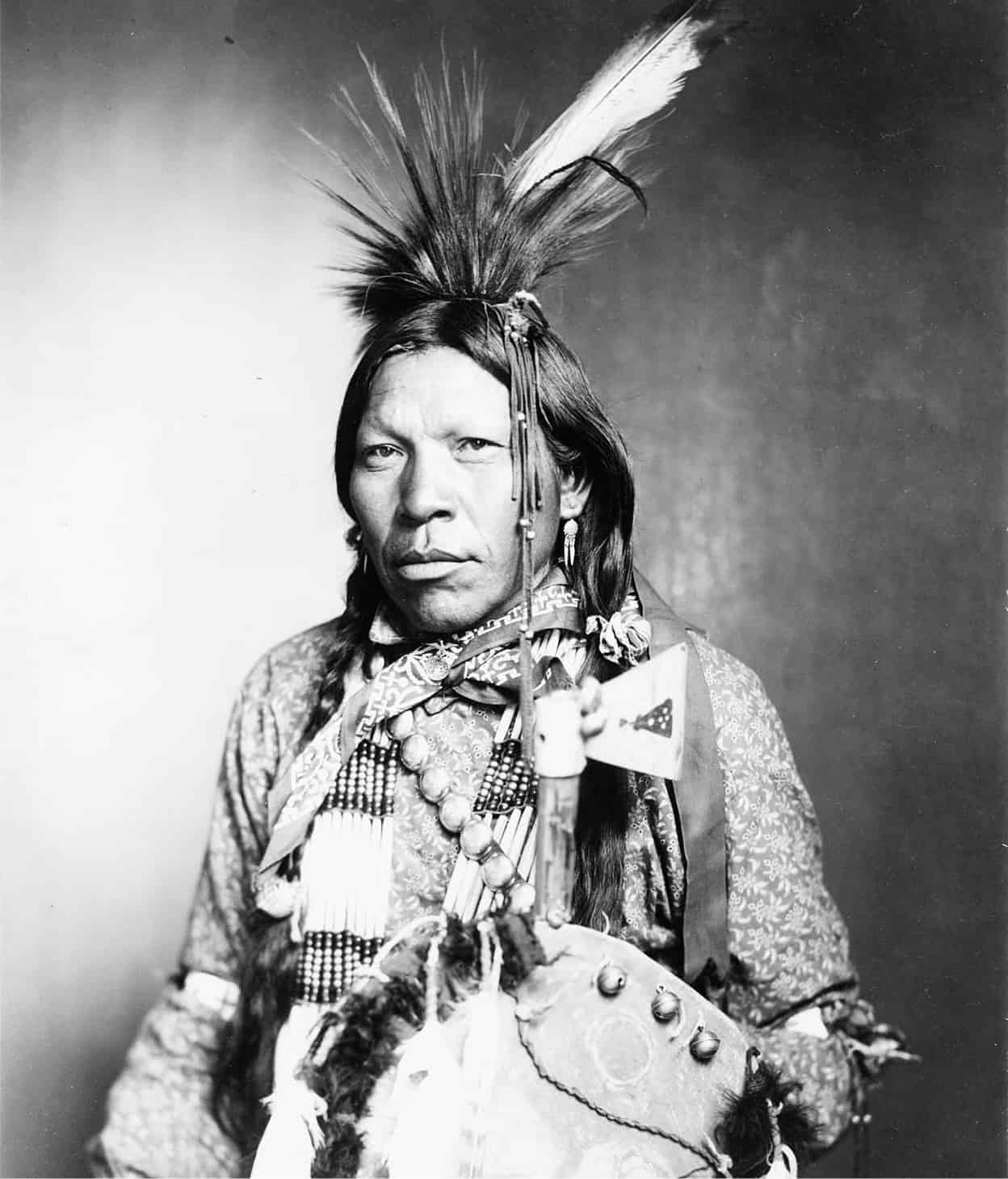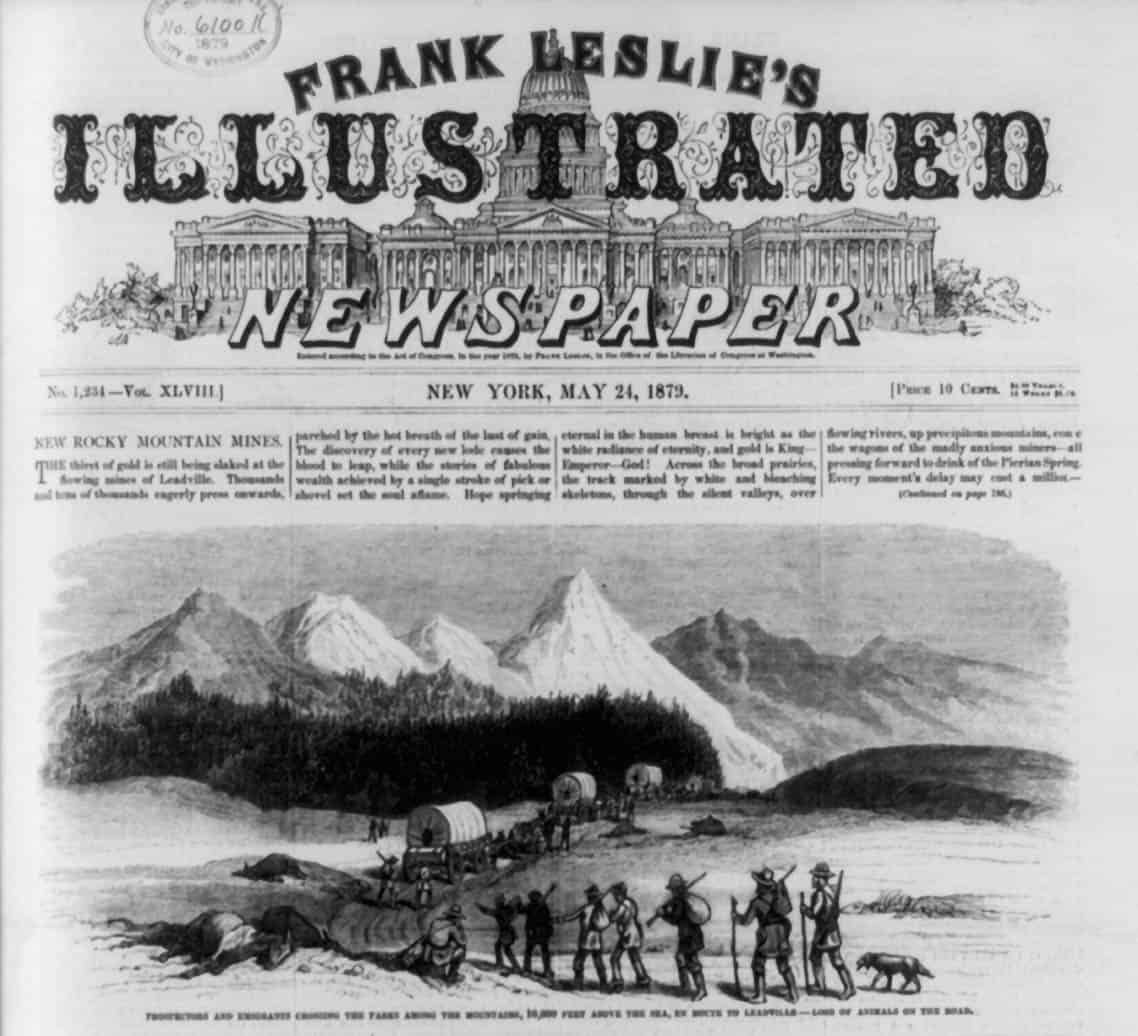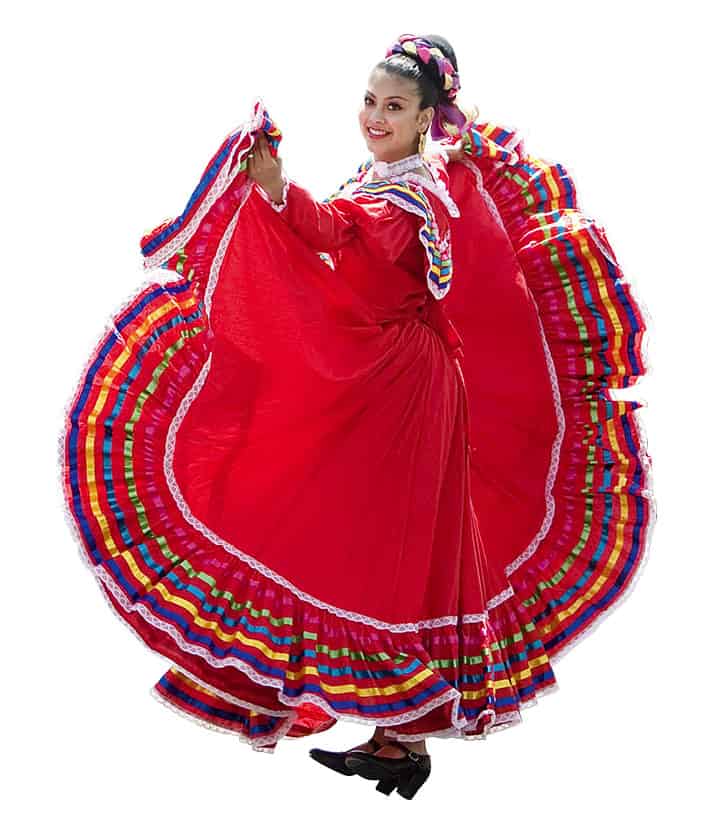Early cultures
AD 1
The pithouse-dwelling Basketmaker people inhabit the Four Corners area.
c.1300
Drought forces Ancestral Puebloans to abandon pueblo villages in the Four Corners.
c.1500
Colorado is now home to the Arapaho and Cheyenne peoples in the eastern plains and the Utes in western parts of the state.

An Arapaho warrior.
Library of Congress
Strangers from afar
1682
French explorer René-Robert La Salle claims the region east of the Rockies for France.
1739
French traders, the Mallet brothers, pass through what is now eastern Colorado en route to Santa Fe.
1765
Juan Maria de Rivera and fellow Spaniards explore the San Juan and Sangre de Cristo ranges.
Americans move in
1803
Most of what is now eastern Colorado becomes American through the Louisiana Purchase.
1806
American Lt Zebulon M. Pike and a party of 22 men explore mountains west of Pueblo and Colorado Springs.
1820
Major Stephen H. Long and an army force explore what is now Colorado.
1832
During the “mountain man” era, Bent’s Fort is built by the Bents and St. Vrain Company near La Junta.
1842
Lt John C. Frémont leads the first of five exploratory missions to the Rockies.
1846
General Stephen W. Kearney leads his “Army of the West” over the Santa Fe Trail through today’s southeastern Colorado to peacefully take New Mexico for the United States from Mexico. Most of what is now western Colorado becomes American two years later.
1851
The first permanent settlement in Colorado is founded at Conejos in the San Luis Valley by six Hispanic families. The Treaty of Fort Laramie assures the Cheyenne and Arapaho tribes’ continued use of what was to become Colorado’s eastern plains region.
Boom Times
1858
Small deposits of gold are found near the South Platte River and Cherry Creek, kicking off the region’s gold rush. Denver City is founded.
1859
John Gregory’s gold strike at North Clear Creek on May 6 reinvigorates local mining prospects. Some 40,000 gold-diggers flock to the area to try their luck.
1861
The US Congress establishes the Colorado Territory (pop. 25,371), so named from the belief that the source of the Colorado River was located within it.
1864
Cavalrymen slaughter about 150 Cheyenne and Arapaho men, women and children at the Sand Creek Massacre.
1867
Under the Treaty of Medicine Lodge, members of the Cheyenne and Arapaho tribes agree to move to reservations in Oklahoma. Denver becomes the territorial capital.
1871
Colorado Springs is founded by General William J. Palmer.
1875
Rich silver deposits are found near Leadville.

A newspaper article from 1879 showcases Leadville on the front page.
Library of Congress
1876
Colorado is admitted to the Union.
1879
Indian agent Nathan C. Meeker is slain along with several others in an Ute uprising.
1881
The Ute tribes are removed onto reservations.
1888
Two cowboys are the first Anglos to see the ancient ruins of Cliff Palace at Mesa Verde
1891
One of the world’s great gold strikes is made at Cripple Creek. Gold production reaches a peak of more than $20 million annually by 1900.
1893
Congress repeals the Sherman Silver Purchase Act, wreaking havoc on the silver industry.
A new century
1903–4
Miners strike for better working conditions. Militia are summoned to break strikes by the Western Federation of Miners.
1914
Twenty people, including 12 children, are killed during the Ludlow Massacre, pitting miners against state militia near Trinidad.
1915
Rocky Mountain National Park is created.
1917
“Buffalo Bill” Cody dies and is buried on Lookout Mountain, west of Denver.
1918
World War I stimulates the mining of local molybdenum (used in steel alloys); coal output reaches a new high of 12 million tons.
1931
The state’s population exceeds one million.
1946
Uranium is discovered near Grand Junction.
1958
The Air Force Academy opens near Colorado Springs.
1959
The Colorado–Big Thompson system brings water to the state’s populous eastern region.
1974
Huge deposits of shale oil are tapped on the Western Slope.
1982
Exxon closes oil fields in western Colorado. The 1980s bring growth in the high-tech sector.
1995
Denver International Airport opens.

Dancing in a traditional costume.
Colorado Tourism/Matt Inden
2012
Colorado’s estimated population reaches 5,187,582.
2013
Clashing storm systems over the Front Range cause historic flooding. Ten people die, over 1,852 homes and 203 businesses are destroyed. Damages approach $4 billion.
2014
Same-sex marriage is legally recognized in Colorado on October 7, 2014.
2015
After legalization of recreational marijuana in 2014, new businesses and sales turbo-charge Colorado’s economy. Sales reach $996 million in 2015.
2016
The Denver Broncos win the NFL Super Bowl for the third time, beating the Carolina Panthers 24-10 in Super Bowl 50.